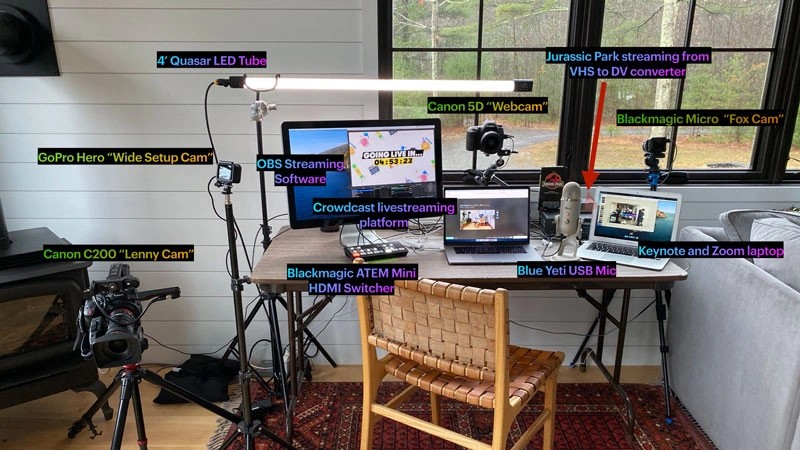A remarkable 91% of content creators need multiple revenue streams to build green practices in today’s digital world . My years of experience in this field have taught me that broadening your income sources isn’t just a smart move—it’s crucial for survival.
Content creators’ money-making methods have changed significantly. Brand partnerships still dominate creator earnings at 94% , but smart creators now head over to different revenue channels beyond sponsored content. Most brands currently pay creators $250-$450 per 10,000 followers for sponsored posts , which represents just a fraction of possible earnings. The affiliate marketing sector will likely hit $36.9 billion by 2030 . US social media creators have also seen their tipping and gifting revenue jump by nearly 40% compared to last year .
This piece breaks down five proven revenue strategies that successful creators use in 2025. These methods can help you create stable growth opportunities whether you’re new to the scene or ready to broaden your existing income streams. You won’t need to worry about unpredictable algorithms or platform rules anymore.
Brand Sponsorships
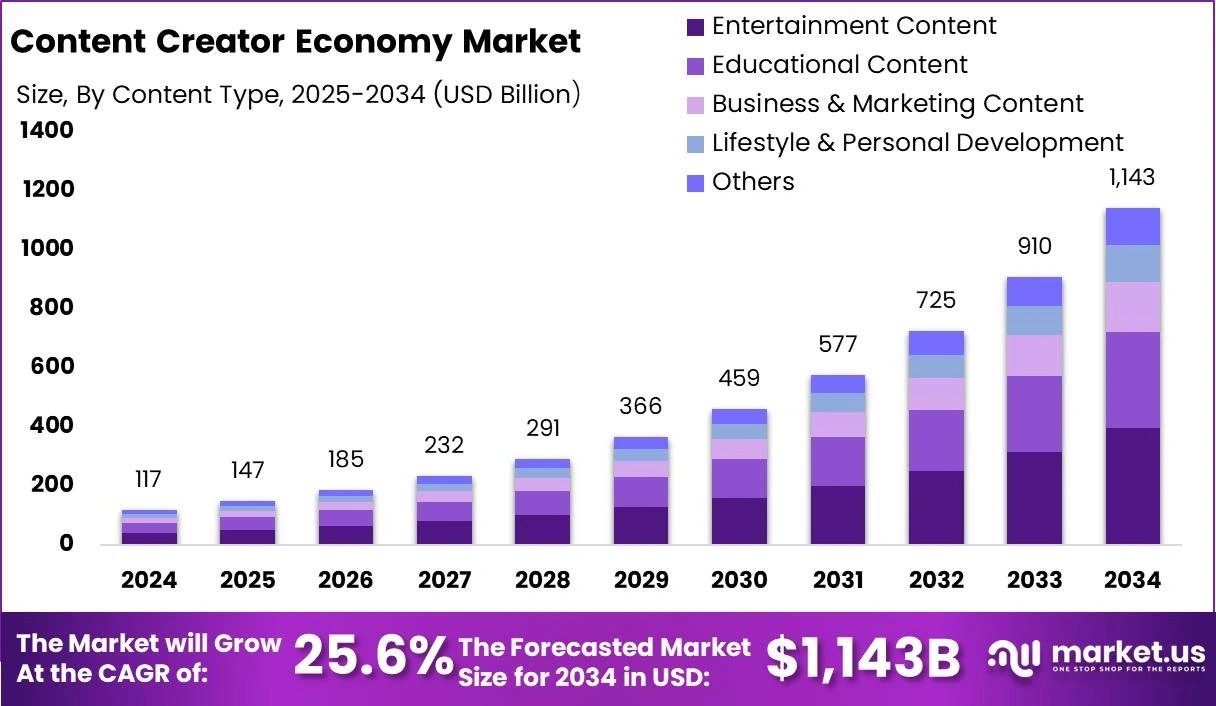
Image Source: Market.us
Brand partnerships are the life-blood of creator monetization. Over 80% of influencers make their primary income from sponsored content [1]. The digital world has become more competitive, and creators need to know how to utilize these opportunities to build sustainable revenue.
Brand Sponsorships Overview
Brand sponsorships let creators earn money by promoting products or services to their audience through different content formats. These strategic collaborations build the foundation of the influencer marketing industry, which experts predict will hit $32.5 billion by 2025 [2]. Brands love working with creators because they bring authentic connections with engaged audiences that traditional advertising can’t match.
The sponsorship world has changed a lot. Industry experts say 2025 has seen a move from celebrity-focused campaigns to micro-sponsorships and community-based strategies [3]. This development shows brands now understand that smaller creators encourage stronger trust with their audiences, even with smaller followings.
Research shows that 82% of consumers trust micro-influencer recommendations [2]. This trust explains why micro-influencers achieve 5-20% engagement rates, which is much higher than the 1-3% macro-influencers typically see [2].
How Brand Sponsorships Work
Sponsorships come in several forms:
- Product Reviews – Dedicated content evaluating a brand’s offerings
- Sponsored Videos/Posts – Content created specifically for a partnership
- Brand Integrations – Smooth product mentions within regular content
- Long-term Partnerships – Ongoing collaborations as brand ambassadors
Brands either reach out directly or work through specialized agencies. Large companies often prefer agencies that handle everything from finding creators to managing campaigns and tracking results [4].
Brands approach sponsorships with two main goals: they either want to build awareness and brand value, or they aim to drive sales and measure results [4]. Paula Albuquerque, managing partner at Ykone UK, says, “We should stop looking at endorsements from the perspective of an endorsement and start looking from the perspective of building brand value over time” [3].
Creators must use hashtags like #ad or #sponsored to stay transparent [1]. Successful creators think over whether a product helps their audience before promoting it [5].
Brand Sponsorships Earnings Potential
Platform choice, audience size, engagement, and niche all affect sponsorship rates. Here’s what creators typically earn:
- Nano-creators (1K-10K followers) get $50-$300 per video, plus free products [1]
- Micro-creators (10K-100K) earn $300-$2,500 per video, sometimes up to $5,000 [1]
- Mid-tier (100K-500K) make $5,000-$10,000+ per video [1]
- Macro-creators (500K-1M) receive $10,000-$20,000+ per video [1]
- Mega-creators (1M+) command $20,000-$100,000+ per video, with yearly brand income reaching $16-$54 million [1]
YouTube creators often price their work using CPM (cost per thousand views), ranging from $20 to $70 per 1,000 views [4]. A channel getting 100,000 views per video might earn $2,000 to $7,000 for sponsored content.
Several factors affect these rates:
- Audience demographics: Viewers aged 25-45 with higher incomes boost rates
- Engagement: Rates jump 50% when engagement tops 4%
- Niche: Business, finance, tech reviews, and wellness content earn more
- Production quality: High-quality content adds 25-40% value [1]
Creator pay transparency has doubled some sponsorship rates in 2025 [6]. Creators now share deal information and negotiation details in their communities.
Tools and Platforms for Brand Sponsorships
Creators can connect with brands through various platforms:
Influencer Marketing Platforms:
- Upfluence: Offers influencer discovery, campaign management, and performance analytics [3]
- SocialBook: Links creators with 500+ verified brands seeking collaborations [3]
- Collabstr: Helps smooth out brand-creator partnerships
Management Tools:
- Media Kits: Show channel statistics, content portfolio, and sponsorship packages to attract sponsors [4]
- Later for Creators: Manages campaigns and brand connections [7]
Creators who want to vary their income can use platforms like Rupa Pro to turn existing content into digital products. This balanced approach helps creators stay authentic while building stable income sources.
The industry now favors hybrid sponsorship models. Tools that combine upfront payments with performance incentives have become vital. Research shows that 4 out of 5 creators like performance bonuses with flat fees for stability [8].
The most successful creators build strategic collaborations instead of one-time deals. One expert noted, “We’re now working with some of those influencers again, organically. It’s no longer a paid partnership” [3].
Affiliate Marketing
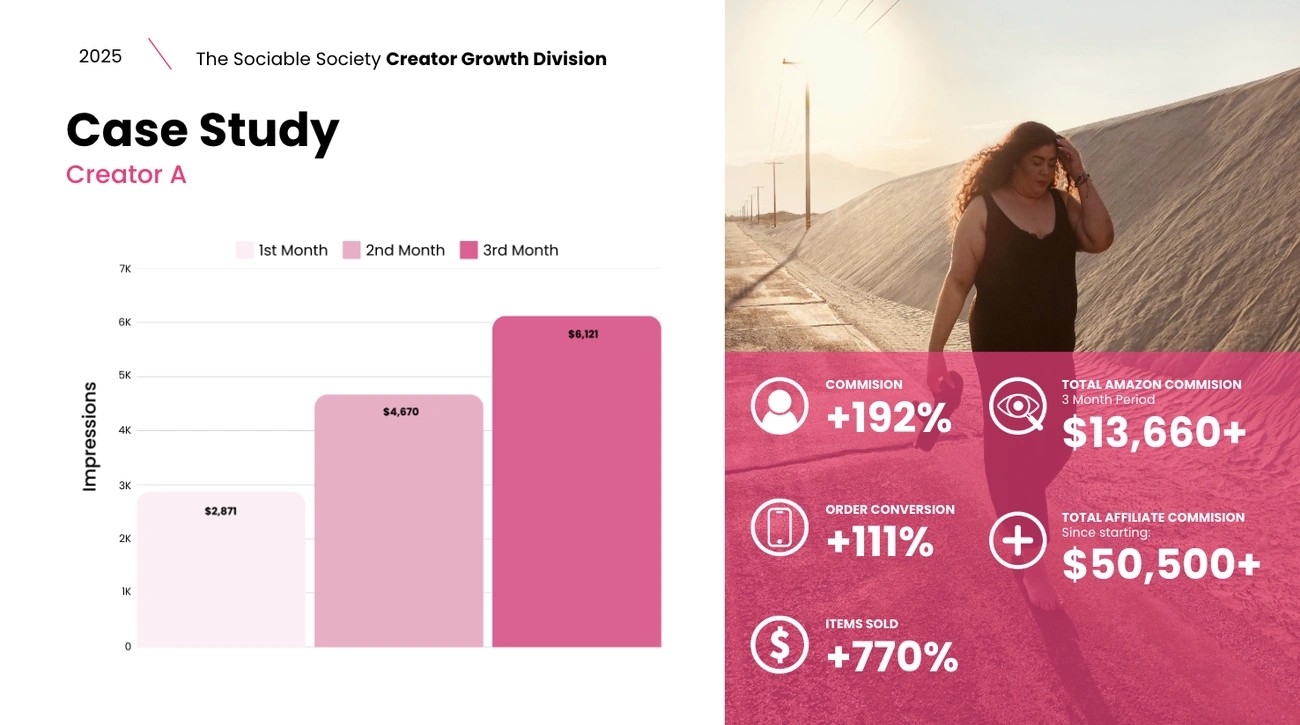
Image Source: The Sociable Society
Affiliate marketing has grown into a multibillion-dollar industry. Brands will invest in partnership programs throughout 2025 approximately $12 billion[9]. This performance-based strategy is the life-blood of content monetization. It gives creators a way to earn passive income while they provide value to their audiences.
Affiliate Marketing Overview
The global affiliate marketing market will reach nearly $40 billion by 2031 [3]. The model works through a simple idea. Content creators earn commissions by promoting products and services from brands through trackable links. Creators receive a percentage of the sale when their audience members make purchases through these links.
Affiliate marketing’s accessibility makes it attractive. Most affiliate programs welcome creators of all sizes, unlike sponsorships that need specific follower counts. Over 81% of advertisers and 84% of publishers use affiliate marketing programs [3]. This revenue stream works well with other monetization methods.
The benefits go beyond the original setup. Affiliate content keeps working for you over time. A well-crafted review or tutorial can generate commissions months after publication. Many creators see affiliate marketing as a foundation to build financial stability alongside active revenue sources.
How Affiliate Marketing Works
Creators start by joining affiliate programs through brands or networks. They receive unique tracking links or promo codes after approval. The creator earns a commission when followers click these links and complete a qualifying action—usually a purchase. The buyer pays no extra cost [10].
Most affiliate programs use a commission structure. About 99% use a cost-per-action (CPA) payment model [3]. Several compensation types exist:
- Commission-based earnings: The most common model pays creators a percentage of each sale (1% to 50% depending on the product and industry) [11]
- Pay-per-lead (PPL): Rewards creators to generate qualified leads through signups or form submissions [3]
- Pay-per-click (PPC): A less common model pays for traffic generation regardless of sales [3]
- Tiered commissions: Progressive structures increase earnings as creators refer more customers [3]
SaaS products offer some of the highest rates in the market with commissions up to 70% [3]. Physical product categories like Amazon’s program typically pay lower percentages between 1-10% [12].
The Federal Trade Commission (FTC) requires clear disclosure of affiliate relationships in content [12]. Phrases like “I may earn a commission” or “This post contains affiliate links” help maintain audience trust while meeting legal requirements.
Affiliate Marketing Earnings Potential
Affiliate marketing income varies based on multiple factors. Authority Hacker reports or $96,336 annually average affiliate marketers earn approximately $8,038 per month[3]. These figures represent experienced marketers. The earnings progression typically looks like this:
- Beginners (less than 1 year): Around $636 per month [3]
- Intermediate (1-3 years): $1,000 to $10,000 monthly [9]
- Advanced (3+ years): $10,000 to $100,000 monthly [9]
- Elite affiliates: $100,000+ monthly [9]
Experience plays a big role in success. Marketers with over three years of experience earn 9.45 times more than beginners [3]. Niche selection affects potential earnings. Education/e-learning leads with $15,551 monthly average, followed by travel ($13,847) and beauty/skincare ($12,475) [12].
Traffic volume determines income potential. Real-life data from bloggers shows creators can expect about $100 per month for every 10,000 views [10]. Product-focused content and social platforms with strong audience trust often have higher conversion rates.
Tools and Platforms for Affiliate Marketing
Several networks and platforms help connect creators and brands:
- Amazon Associates: The largest global affiliate program holds 46.11% market share [3], paying 1-10% commission on products
- ShareASale: Links bloggers with thousands of merchants in various categories [3]
- Impact: Gives access to over 4,000 merchant listings with robust tracking tools [10]
- CJ Affiliate: Offers real-time tracking, customizable commission structures, and advanced security [10]
- Rakuten Advertising: Known for global reach and international company partnerships [12]
Specialized tools can improve affiliate performance:
- Getlasso: Tracks affiliate network performance, monitors click volume, and offers AI link optimization [9]
- RivalFlow AI: Helps optimize content for higher SEO ranking to increase affiliate traffic [9]
- Grammarly: Improves content readability to boost conversion rates [9]
Many creators progress toward making their own digital products as they advance. Platforms like Rupa Pro help transform existing content into courses or downloadable guides. This extends the affiliate model by letting creators own the entire value chain instead of just earning commissions.
Successful affiliate strategies combine authentic recommendations with targeted content optimization. The best creators build trust through helpful reviews, tutorials, and real product experiences that solve their audience’s specific problems.
Selling Digital Products
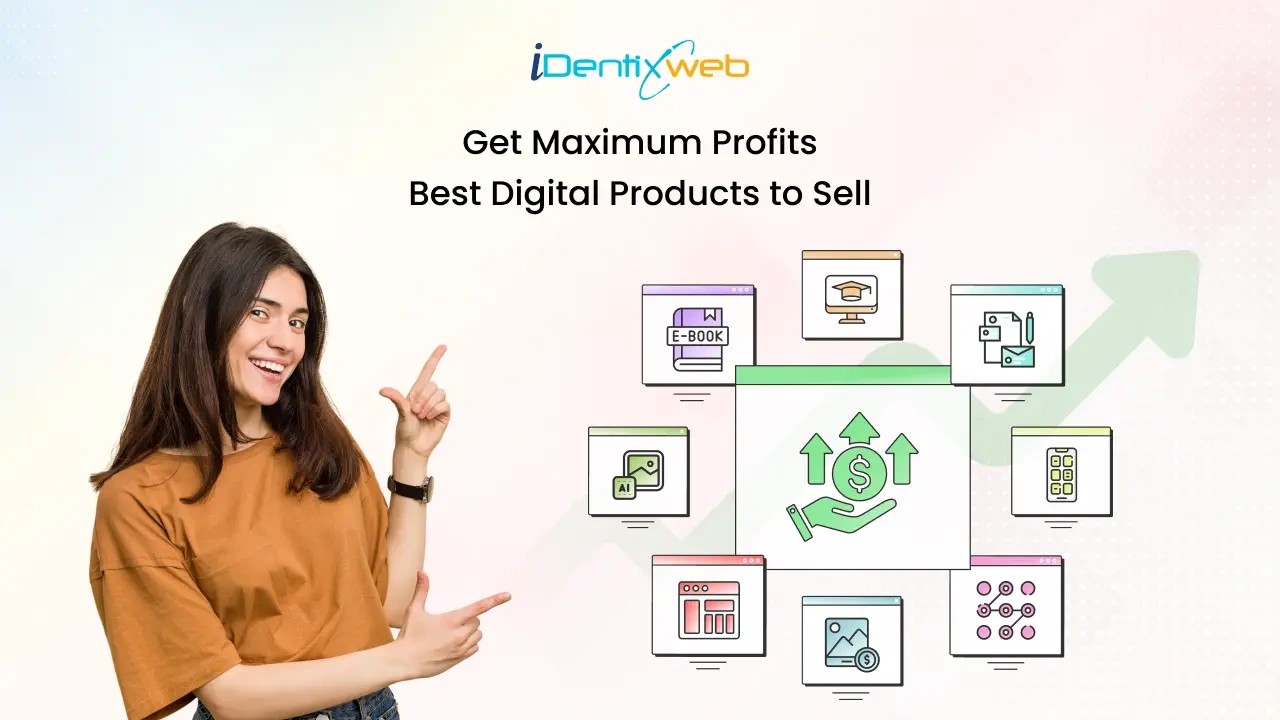
Image Source: identixweb
Digital products have generated more than $2.5 trillion in value by 2025 [13]. These products serve as the life-blood of content creators’ revenue strategies. Unlike physical products that need inventory management and shipping logistics, digital products can be created once and sold repeatedly. This unlocks unlimited earning potential with minimal ongoing costs.
Selling Digital Products Overview
Digital products are intangible assets distributed online without physical interaction. E-books, online courses, templates, software, and membership subscriptions make up this category. The market keeps growing faster, and experts project global digital goods will reach $135 billion in 2024 [14].
Digital products offer unique advantages:
- High profit margins due to minimal production costs
- Scalability without inventory constraints
- Passive income potential through automated delivery
- Global reach without geographic limitations
- Instant delivery enhancing customer experience
Online courses, software applications, and membership subscriptions emerged as the most profitable digital products through 2025 [15]. These formats deliver high value to customers and provide creators recurring revenue opportunities without physical goods’ overhead costs.
How Selling Digital Products Works
Success starts with finding a digital product that lines up with your expertise and audience needs. Popular options include:
- Educational content (courses, ebooks, tutorials)
- Creative assets (templates, graphics, presets)
- Software and applications
- Membership programs and communities
Your next step requires a platform to host and sell your product. Most creators set up an online storefront or use specialized marketplaces. Automated delivery systems give customers immediate access through download links or login credentials.
Marketing plays a significant role in success. Email sequences, social media promotion, and existing content drive traffic effectively. Many creators leverage their audience relationships to generate original sales before expanding to broader markets.
Digital Products Earnings Potential
Digital products’ income varies substantially based on product type, pricing strategy, and marketing effectiveness. Notwithstanding that, ground examples provide valuable standards:
Online courses stand out as one of the most lucrative options. Earnings range from $50 to over $500,000 per course [12]. Ali Abdaal’s Part-Time YouTuber Academy showcases this potential. The academy offers a DIY course at $1,000 and a coached version at approximately $4,000 [16].
Membership sites and online communities offer unlimited earning potential. Some creators generate over $250,000 monthly [12]. E-books typically bring in $5-$300 per sale [12]. This makes them an available entry point for many creators.
Key factors that affect earnings include:
- Product quality and perceived value
- Audience size and engagement
- Pricing strategy
- Marketing effectiveness
- Niche specialization
Digital products excel at scalability. Creators can sell the same product indefinitely without additional production costs and build green practices over time.
Tools and Platforms for Selling Digital Products
Several solutions exist to create and sell digital products:
Creation Tools:
- Canva and Adobe Creative Suite to design assets and visual content
- Apple Keynote to create digital planners
- PDFEscape to create and edit ebooks
- Figma to build website themes and templates [17]
Selling Platforms:
- Sellfy: Built specifically for creators with marketing tools and automated delivery. Creators have earned over $165 million through this platform [18].
- Gumroad: Lets you upload products and start selling quickly, perfect for beginners [19].
- Teachable: Specializes in online courses with complete student management [20].
- Payhip: Offers flexible integration options with existing websites [19].
Rupa offers simplified solutions for creators who find technical aspects challenging. Rupa’s AI Product Generator helps transform existing content into complete courses or challenges effortlessly. . The platform handles checkout, emails, and strategy based on data from hundreds of successful launches.Create an online course on Rupa with the help of AI
Without doubt, your specific needs determine the platform choice. Sellfy earned the “Best Ecommerce for Digital Downloads award for 2025” [19]. The platform offers seamless digital sales features with simple email marketing and live analytics. Creators who need more features might prefer all-in-one solutions that combine product creation, marketing, and community features.
Digital product creation has become more available. Content creators now move from affiliate marketing to developing their own offerings. This shift gives them control over the entire value chain instead of earning commission percentages.
Platform Monetization (YouTube, TikTok, etc.)
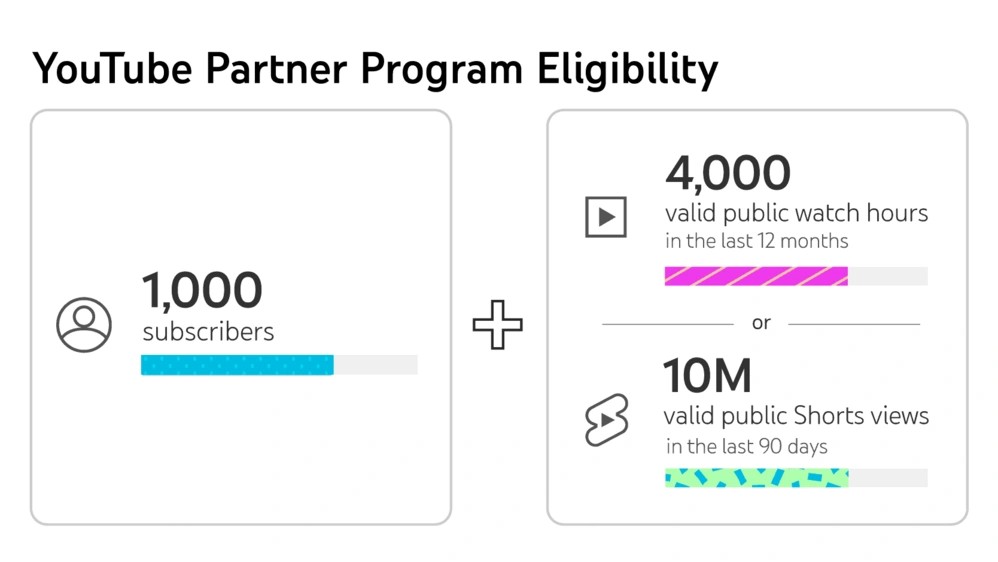
Image Source: The Leap
Content creators now make serious money through built-in platform features. YouTube leads the pack, paying creators over $50 billion in the last few years [3]. Creators can earn directly on their favorite platforms without sending their audience elsewhere.
Platform Monetization Overview
Major social networks let creators make money right where they build their following. Each platform has its own way of sharing revenue with people who bring in engaged viewers.
YouTube remains the king of creator earnings in 2025. say it’s their best income source 28.6% of creators who make money[9]. TikTok comes in second at 18.3%, followed by Facebook at 16.5%, Instagram at 11.8%, and X/Twitter at 6.3% [9].
Live streaming platforms like Twitch and Kick have built strong money-making systems too. Twitch creators can earn through subscriptions, virtual tips called Bits, and ads [3]. Kick tries to compete by offering better payouts, though with fewer rules [9].
How Platform Monetization Works
Each platform has unique ways to help creators earn:
The YouTube Partner Program (YPP) leads the pack. Creators get 55% of ad money from their videos [11]. You need 1,000 subscribers and either 4,000 hours of watch time yearly or 10 million Shorts views to join [11]. Creators can also make money through Super Chats in livestreams, channel memberships, and selling merchandise.
TikTok’s Creator Rewards Program needs 10,000 followers and 100,000 views in 30 days [3]. Creators can also earn through TikTok Shop, brand deals in the creator marketplace, and gifts during live streams [21].
Meta’s platforms keep trying new ways to pay creators. Instagram has Reels Bonuses, Live Badges, and subscriptions [11]. Facebook offers video ad revenue and Stars for tipping [11]. Meta plans to combine Facebook’s money-making features into one program [22].
X/Twitter started paying creators in 2023 through Subscriptions and Ads Revenue Sharing. You need a Premium subscription to access these features, unlike other platforms [9].
Platform Monetization Earnings Potential
Money varies a lot between platforms:
YouTube pays the most. 2-year-old creators earn about $0.02 per ad view [9]. This adds up to $18 for every 1,000 ad views [9]. Shorts creators get between $0.03 and $0.07 per 1,000 views [9].
TikTok’s Creator Rewards Program pays $0.40 to $1.00 per 1,000 views [3]. This beats the old Creator Fund’s $0.02-$0.04 per 1,000 views [9]. Top live streamers can make $35,000 in a single stream [3].
Facebook usually pays $8.75 to $10.00 per 1,000 views. Some creators get as little as $1.00 or as much as $20.00 based on their content and ad rates [9].
Instagram works differently. Instead of paying per view, it focuses on partnerships. Small creators with 1,000-10,000 followers can make $10-$100 for sponsored posts [9].
Tools and Requirements for Platform Monetization
Here’s what you need for each platform:
- YouTube: 1,000 subscribers and 4,000 watch hours or 10 million Shorts views [11]
- TikTok Creator Rewards: 10,000 followers, 100,000 views in 30 days, 18+ years old, living in eligible countries [3]
- Twitch Affiliate/Partner: Regular streaming schedule and growing viewers [21]
- Snapchat: 50,000 followers, 25+ monthly posts, 10 million views or similar engagement [21]
Platform monetization opens doors but has its limits. One creator expert puts it simply: “you’re at the mercy of the platform’s rules and reach” [11]. Tools like Rupa help creators turn their content into digital products they own, reducing platform dependency.
Smart creators mix platform earnings with other income streams. This gives them both wide reach and stable income from their own products and communities.
Fan Subscriptions and Exclusive Content
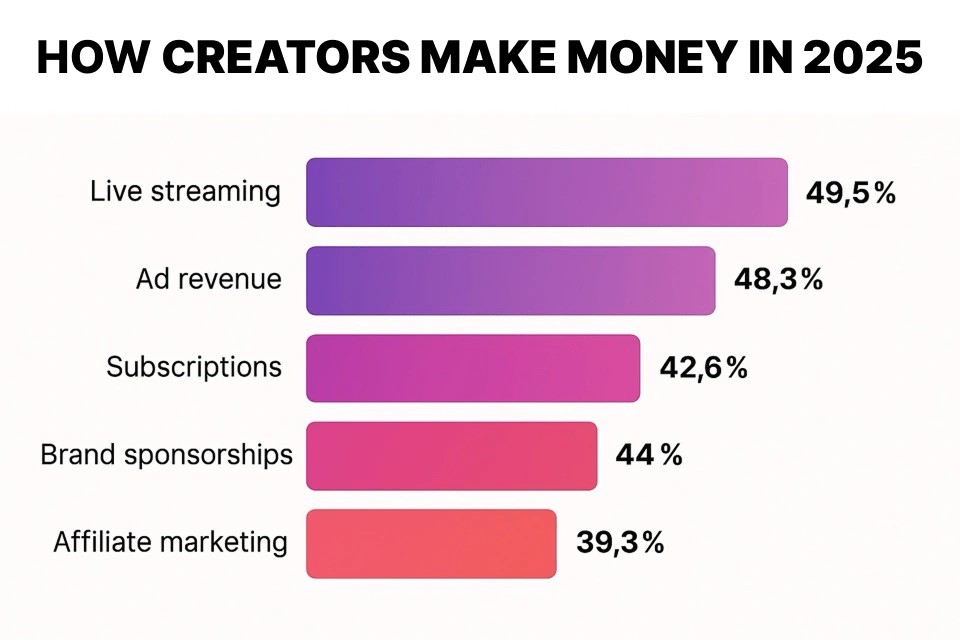
Image Source: Scrile
Monthly revenue from loyal fans has become the life-blood of creator business models. Subscription-based platforms pay out over $8 billion to creators each year [23]. Direct fan revenue helps creators avoid dependence on algorithm changes and gives them the stability they need.
Fan Subscriptions Overview
Premium membership programs let followers pay monthly fees to access exclusive content and experiences unavailable to regular audiences. The direct fan segment of the creator economy will grow from $194 billion in 2025 to over $231 billion by 2027 [24].
These subscription models give creators huge advantages beyond just money. Regular, predictable earnings help with financial planning and promote stronger bonds with dedicated fans. Research shows 80% of fans want to pay for exclusive content or experiences from creators they love [24].
The numbers make a strong case—creators make about 40 times more money per fan on Patreon than on TikTok, with an average of $52 per fan annually [24]. This huge difference shows why creators with smaller but loyal followings can build lasting businesses through subscriptions.
How Fan Subscriptions Work
The process is simple. Creators set up different membership tiers at various price points, usually between $2.99 to $99.99 monthly [12]. Each tier comes with different perks:
- Exclusive content (behind-the-scenes videos, early access)
- Direct creator interaction (private messages, live Q&As)
- Community access (subscriber-only groups)
- Discounts on merchandise or other offerings
Fans get immediate access to these perks after subscribing. Creators need content ready before launching their subscription programs [15]. Keeping subscribers happy means delivering value worth their monthly investment.
Fan Subscriptions Earnings Potential
Platform earnings vary significantly. Facebook creators with engaged communities see subscriptions become “a meaningful revenue driver” [15]. Patreon, one of the oldest platforms, had 279,000+ paying creators earning over $24 million monthly as of 2025 [23].
OnlyFans stands out as one of the most profitable subscription platforms. Creators keep 80% of all revenue they generate [25]. Users spent an incredible $7.2 billion on the platform in 2024 [25]. Top creators earn six and seven-figure incomes.
The Try Guys show this potential at scale. They put most new videos behind a $5 monthly paywall and became profitable in just three months [26]. Smaller creators say subscription money helps pay their monthly rent reliably [26].
Tools and Platforms for Fan Subscriptions
These platforms lead the subscription space:
- Patreon: The pioneer in creator subscriptions, known for flexible tier options and strong community features
- OnlyFans: Offers 80% revenue share in various content niches [25]
- Facebook/Instagram Subscriptions: Creators keep 100% of earnings during test periods [15]
- Memberful: Combines smoothly with existing websites for subscription management
- Fanbase: Offers tiered subscriptions from $2.99 to $99.99 [12]
Rupa helps creators who want an all-in-one solution. It combines subscription features with AI-powered content creation tools. This helps turn existing content into subscription products without needing technical skills.
The best subscription models give clear value that free followers can’t access. Converting just 2-3% of your total audience into paying subscribers can create substantial revenue if you deliver valuable content consistently [13].
Comparison Table
| Revenue Stream | Market Size/Potential | Average Earnings | Key Requirements | Popular Platforms/Tools | Commission/Revenue Share |
| Brand Sponsorships | $32.5B by 2025 | Nano (1K-10K): $50-$300/videoMicro (10K-100K): $300-$2.5K/videoMid-tier (100K-500K): $5K-$10K+/videoMacro (500K-1M): $10K-$20K+/video | Active followingHigh engagement ratesQuality content creation | UpfluenceSocialBookCollabstr | $250-$450 per 10K followers |
| Affiliate Marketing | $40B by 2031 | Beginners: $636/monthIntermediate: $1K-$10K/monthAdvanced: $10K-$100K/month | No minimum requirementsFTC disclosure compliance | Amazon AssociatesShareASaleImpactCJ Affiliate | 1-70% commission (varies by product) |
| Digital Products | $2.5T market value | Courses: $50-$500K/courseMemberships: Up to $250K/monthE-books: $5-$300/sale | Content creation expertiseEstablished audience | SellfyGumroadTeachablePayhip | 100% minus platform fees |
| Platform Monetization | $50B+ (YouTube) | YouTube: $18/1K ad viewsTikTok: $0.40-$1.00/1K viewsFacebook: $8.75-$10/1K views | YouTube: 1K subs + 4K watch hoursTikTok: 10K followersFacebook: Varies by program | YouTube Partner ProgramTikTok Creator RewardsMeta Monetization | YouTube: 55% ad revenuePlatform-specific rates |
| Fan Subscriptions | $194B in 2025 | $52 per fan annuallySubscription tiers: $2.99-$99.99/month | Regular content updatesDedicated audience | PatreonOnlyFansMemberfulFanbase | 80-100% (platform dependent) |
Conclusion
Creating a sustainable business as a creator requires you to broaden your income sources. The numbers tell the story – 91% of creators who made it big rely on multiple ways to earn money. Brand collaborations can bring in substantial money, but their schedules are unpredictable and depend heavily on platforms. The passive income from affiliate marketing needs minimal investment to start, but you’ll need to plan your content carefully and earn your audience’s trust.
Digital products are probably the most adaptable option out there. You create something once and can sell it over and over without worrying about inventory. Platform earnings give you ready-made audiences, but you’re at the mercy of algorithm shifts and new policies. Monthly subscriptions from fans give you steady income and help build stronger community bonds.
The most successful creators mix and match these different approaches. Here’s my advice: Pick one income source that fits your current content and audience. Once you gain momentum, add more options gradually. Tools like Rupa Pro make this process much easier, especially when you want to turn your existing content into digital products or subscription offers without any technical hassle.
The creator economy grows faster each day, with endless possibilities for those ready to try new things. Your unique voice and viewpoint are your biggest strengths – you just need the right money-making strategy to match them. These five proven ways to earn can help you build something lasting, whether you’re new to the game or looking to broaden your existing income. They’ll help you stay strong even when algorithms change unexpectedly.
Which way of earning will you try first?
Key Takeaways
Successful content creators in 2025 leverage multiple revenue streams to build sustainable businesses, with 91% relying on diversified income sources rather than depending on a single monetization method.
• Diversify beyond sponsorships: While brand partnerships generate $250-$450 per 10K followers, combine them with affiliate marketing (up to 70% commissions) and digital products for stability.
• Create scalable digital products: Online courses and memberships offer unlimited earning potential ($50K-$500K per course) since they can be sold repeatedly without inventory costs.
• Build direct fan relationships: Subscription models generate 40x more revenue per fan than platform ads, with creators earning $52 annually per subscriber on average.
• Master platform monetization requirements: YouTube pays $18 per 1,000 ad views but requires 1,000 subscribers and 4,000 watch hours to qualify for their Partner Program.
• Start with one stream, then expand: Begin with the revenue method that best matches your current content and audience, then gradually add complementary income sources as you build momentum.
The most profitable creators combine authentic audience relationships with strategic monetization, using tools and platforms that automate delivery while maintaining creative control over their content and community.
FAQs
Q1. Is content creation a viable career path in 2025? Content creation has become increasingly lucrative, with the creator economy expanding rapidly. As brands allocate more marketing budgets to creator-led campaigns, there are ample opportunities for content creators to build sustainable businesses through multiple revenue streams like sponsorships, affiliate marketing, and digital products.
Q2. What are the most profitable types of digital products for creators to sell? Online courses, software applications, and membership subscriptions tend to be the most profitable digital products for creators. These formats provide high value to customers while offering creators recurring revenue opportunities with minimal ongoing costs after initial creation.
Q3. How much can top creators earn from platform monetization? Earnings vary widely, but top creators on platforms like YouTube can earn substantial amounts. For example, established YouTube creators may earn around $18 for every 1,000 ad views. On TikTok, top creators with live streaming capabilities can potentially earn up to $35,000 per stream.
Q4. What are the key requirements to start monetizing content on major platforms? Requirements differ by platform. For YouTube, creators need 1,000 subscribers and either 4,000 watch hours or 10 million Shorts views in the past year. TikTok’s Creator Rewards Program requires 10,000 followers and 100,000 views within a 30-day period. Most platforms have similar thresholds to ensure creators have an engaged audience before monetization.
Q5. How effective are fan subscriptions as a revenue stream for creators? Fan subscriptions have become a cornerstone of creator business models, offering consistent and predictable income. Creators can earn approximately 40 times more revenue per fan through subscriptions compared to platform ads. Even with a small but loyal following, creators can build sustainable businesses, with some earning an average of $52 per fan annually through subscription models.
